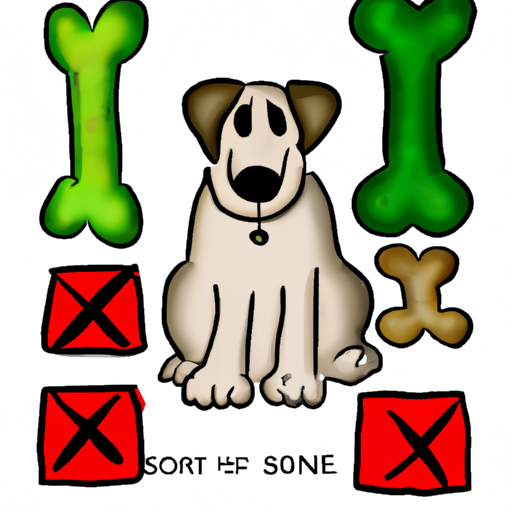As a pet parent, you’re perpetually on the lookout for ways to keep your furry friend healthy and happy. It’s likely that you’ve encountered the common question: “which bones are safe for dogs?” This article will provide a comprehensive guide on the types of bones that are safe for dogs, the potential risks of giving bones to dogs, and frequently asked questions about the subject.
Table of Contents
- The Importance of Bones for Dogs
- Types of Safe Bones for Dogs
- Potential Risks and How to Mitigate Them
- Frequently Asked Questions
Key Takeaways
- Not all bones are safe for dogs.
- Raw bones are generally safer than cooked ones.
- Bones should be size-appropriate for your dog.
- Always supervise your dog while they’re gnawing on a bone.
The Importance of Bones for Dogs
Dogs have a natural instinct to chew. Providing them with a safe and appropriate outlet for this behavior, such as a bone, can be beneficial to their overall health and well-being. Chewing on bones can help keep a dog’s teeth clean, provide mental stimulation, and satisfy their instinctual urges. That being said, it’s essential to select the right bone for your dog to ensure their safety.
Types of Safe Bones for Dogs
When it comes to picking the right bone for your pup, size matters. The bone should be large enough that your dog can’t swallow it whole or choke on it. Here are a few types of bones that are generally considered safe for dogs:
- Raw Bones: Raw bones, particularly beef and lamb bones, can be a good choice for your dog. They are softer than cooked bones and less likely to splinter. However, they should always be given under supervision to prevent choking or accidental swallowing. You can find more information about raw feeding here.
- Artificial Bones: Artificial bones, like those made from nylon or hard rubber, can be a safer alternative to real bones. They are designed to be durable and withstand aggressive chewing. Additionally, many are flavored to make them more appealing to dogs.
Potential Risks and How to Mitigate Them
While bones can provide numerous benefits for dogs, they also come with potential risks. Cooked bones, especially those from poultry, can easily splinter and cause blockages or injuries to a dog’s digestive system. To mitigate these risks:
- Always supervise your dog while they are chewing on a bone.
- Avoid giving your dog cooked bones.
- Choose size-appropriate bones.
- Regularly inspect the bone for any potential hazards, such as splintering or extreme wear.
For more tips on keeping your dog safe while enjoying a bone, check out this article.
Frequently Asked Questions
Q: Can I give my dog a cooked bone?
A: No, cooked bones are not safe for dogs. They can easily splinter and cause serious harm to your dog’s digestive system.
Q: What should I do if my dog swallows a bone whole?
A: If your dog swallows a bone whole, seek immediate veterinary attention. This could potentially cause a blockage in your dog’s digestive system, which can be serious or even fatal.
Q: Are chicken bones safe for dogs?
A: No, chicken bones are not safe for dogs. They can easily splinter and cause harm to your dog’s digestive system.
Q: How long should I let my dog chew on a bone?
A: This can depend on the type and size of the bone, as well as your dog’s chewing habits. Always supervise your dog while they’re chewing on a bone and take it away if it becomes a choking hazard or is worn down to a small size.
In conclusion, while bones can be a great treat for your dog, it’s crucial to consider the type and size of the bone, and always supervise your dog while they’re enjoying it. For more tips on dog care, check out these articles on dog grooming and dog nutrition.



